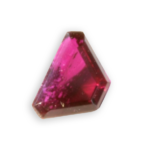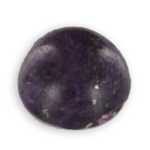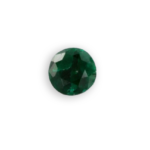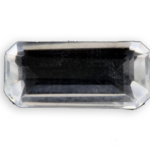
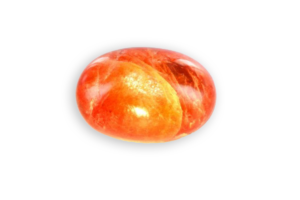
sunstone
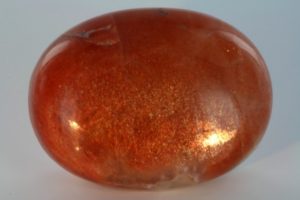
African sunstone cut in cabochon
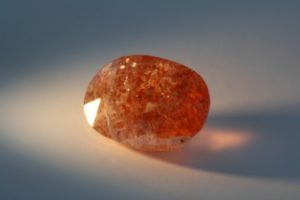
sunstone from Tanzania with confetti of hematite sequins
Detailed sheet
sunstone
It consists of feldspar, mostly plagioclase and mainly oligoclase, some andesine and labradorite and has a characteristic appearance: there is a flicker of small metallic flakes inside an orange mass, this is why it was given the name of sunstone, or héliolite.
This orange optical effect is caused by thin layers of hematite or goethite on which the light is reflected flickering, sometimes in blue or green, this phenomenon is also called aventurescence.
Furthermore the plagioclase feldspars often show a Schiller effect or adularescence / labradorescence (due to the superposition of different plagioclase strips that interfere) which adds to the sparkle of glitter metallic inclusions.
The variety from Oregon in the United States (Oregon Sunstone), consisting of labradorite and discovered in the 1980s contains micro particles of copper instead of hematite that enhance the color orange. It can also be green, yellow, pink, brown, colorless and often transparent…
It is also possible that the sunstone is made up of other plagioclase feldspars or even some alkaline feldspar microcline or ortoclase.
This feldspar is not to be confused with the “aventurine” quartz which contains fine particles of fuschite when its green, or of mica and hematite when it is orange.

CHEMICAL CHARACTERISTICS
(Ca,Na)[(Si,Al)4O8]
calcium - sodium alumino silicate

PHYSICAL CHARACTERISTICS
Main color
orange
Other colors
brown, red
sparkling effect as glitters in the stone
Color of streak
white
Luster
vitreous
Hardness
6.0 to 6.5
Density
2.61 to 2.65
Cleavage
perfect
Fracture
uneven
in grades

OPTICAL PROPERTIES
Transparency
opaque, translucent, transparent
translucent in strips
Refractive index
1.525 - 1.546
Double refraction
0.010
weak, biaxial (+), higher refractive index for the labradorites
visible double refraction
No
Dispersion
0,012
Pleochroism
variable
Number of colors
1
very weak when there
Fluorescence
weak
brown - orange
Inclusions
hematite, goethite

CRYSTALS PROPERTIES
in massive agregates
crystals system
triclinic

OTHER INFORMATIONS
Astrological sign
Cancer, Scorpio

APPROACHING GEMS
Exploited
sites
The main deposits are located in eastern North America, the United States and Canada. It is also found in India, Russia, Madagascar, Norway, Australia and Tanzania.
use in jewelry
It is cut into cabochons or flat slats but the faceted cuts, transparent and red, green or deep orange are the most popular.
The sunstones from Oregon, transparent and two – colored (green and red) are the rarest.
Daily care
and precautions
Somewhat fragile, easy to maintain on a daily basis. Washing with water and detergent and then rinse with pure water.
imitations and
treatments
The Aventurine glass invented in Murano, Italy in the eighteenth century can easily be confused with sunstone.
Historical
healing properties
The sunstone is a warm stone as its name suggests, it would symbolize the vital energy, joy, wellness, would improve self-confidence, clear thinking. It would encourage contacts, friendship, meetings, creating a harmonious atmosphere between individuals.
It would more easily support the changing seasons.
historical stones
and related legends
The North American Indians used it in rituals to enjoy the benefits of solar radiation on the body.
In India it was believed that the sunstones were pieces of the sun which fell on earth to bring health and prosperity to those who found them.
Venez visitez
notre site web
voillot-joaillier.fr
Lorem ipsum dolor sit amet, consectetur adipiscing elit. Ut elit tellus, luctus nec ullamcorper mattis, pulvinar dapibus leo.Lorem ipsum dolor sit amet, consectetur adipiscing elit. Ut elit tellus, luctus nec ullamcorper mattis, pulvinar dapibus leo consectetur adipiscing elit. Ut elit tellus, luctus nec.

